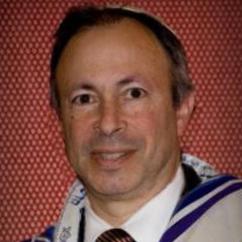Nusah: A Key to the Meaning of Prayer

Of all the traditional melodies in the liturgical year, I have long been impressed by the remarkable musical setting of the kaddish preceding the prayers for Geshem (rain) at Shemini Atzeret, near the conclusion of the fall festival, and Tal (dew) at the beginning of Pesah in the spring).
It has been abundantly clear to me that the arrival of rain (geshem) or dew (tal)—at the right time and in the right amount—was crucial to the survival of the people who chanted or heard the prayer. For most of my life, however, this life-or-death connection with meteorological phenomena wasn’t so clear, because for most of us, food has come from the supermarket, not from the farm adjacent to the town in which we live. Jewish Americans are known primarily as urban and suburban. Even if there were droughts or other calamities in one area, our modern transportation systems have made it possible to get food from elsewhere in the world, usually with little variation in price. This doesn’t help if you’re the farmer affected by the calamity, of course.
The sense that survival hinges on the proper agricultural outcome is clear in this ancient melody:
![]()
The kaddish, in its various forms, is ubiquitous in Jewish communal worship. Hazzanim and well-educated lay daveners know the many diverse melodies associated with different parts of different services. A few are of particular melodic or modal interest—but none is like the Geshem/Tal kaddish, which covers more than an octave in its centuries-old nusah. In the Ashkenazic tradition, it is chanted in a minor key with a surprising (very surprising) amount of melisma in the basic nusah. (Nusah is a term that denotes the customary wording, melody, and mode for our prayer traditions. Though Sephardic and Ashkenazic communities have different nusah traditions and many variations within those communities, the traditions are at least hundreds of years old—sometimes considerably more—and precious as a connection to the religious culture available to us in our prayers.) This minor key also crosses over into other modal areas—again, to my mind, an indication of how delicate we feel about the moment of this prayer. And part of the melody is also identical to what we chanted just a week earlier during Ne‘ilah on Yom Kippur—again, a rather fateful moment as the gates of Yom Kippur close.
This melody occurs prior to the performance of the Geshem prayer itself—a complex, touching, or convoluted (depending on your point of view) piyyut (liturgical poem) exhorting God to send water for the sake of Abraham, Isaac, Jacob, Moses, Aaron, and the tribes of Israel—with biblical references embedded in each text.In this elegant poetry, Abraham, Isaac, et al. aren’t even named directly, but through association with aspects of their qualities or deeds.(In recent times, sensitive modern paeans have added paragraphs pleading on behalf of Sarah, Rebecca, Rachel, Leah, and Miriam. The efforts of Mark Frydenberg and the late Rabbi Simcha Roth can be found here).
The deep emotional expression of the Geshem melody for the kaddish preceding the Geshem prayer helps open us to this poetry and understand it as a life-affirming plea to God and to nature. It also helps us connect our own emotions to the concern and hope for well-being for our farmers in Israel, here, and around the world, as well as the people whose lives and sustenance depend on the outcome of the agricultural process.
Here are some interesting recordings of the Geshem prayer itself:
From Yossele Rosenblatt, whom many consider the greatest hazzan ever.
From Meir Finkelstein, Cantor of Shaarey Zedek, Southfield, Michigan. Meir is himself a very accomplished composer, and he sets these ancient prayers in a much more contemporary way.
From Zawel Kwartin—another of the great hazzanim of the early 20th century .
If you weren’t already planning a visit to synagogue this Shemini Atzeret (Monday, October 8), please consider doing so—for the sake of Abraham, Isaac, Sarah, Rebecca, and everyone.
Here are some examples of other kaddishes from the liturgical cycle, and their connections to the nature of the occasion:
Hatzi Kaddish before Ne‘ilah: Yom Kippur
![]()
Hatzi Kaddish during Ma’ariv: Rosh Hashanah and Yom Kippur
![]()
Hatzi Kaddish during Torah reading: Festivals
![]()
Kaddish Shalem after Shaharit: Festivals
![]()



